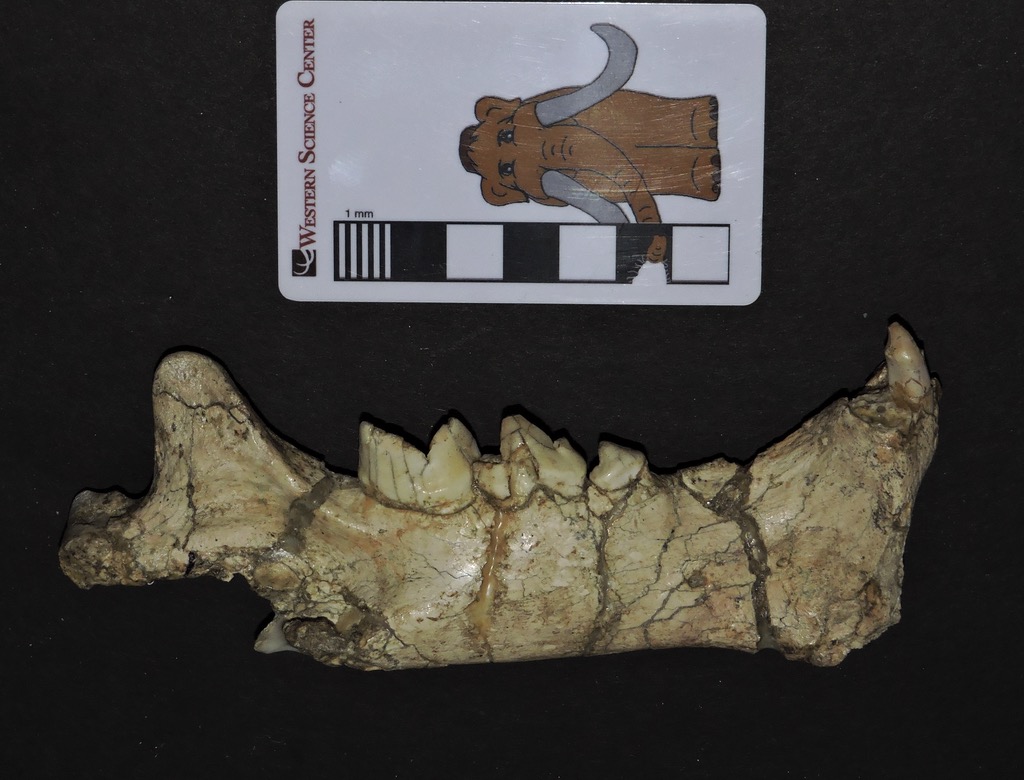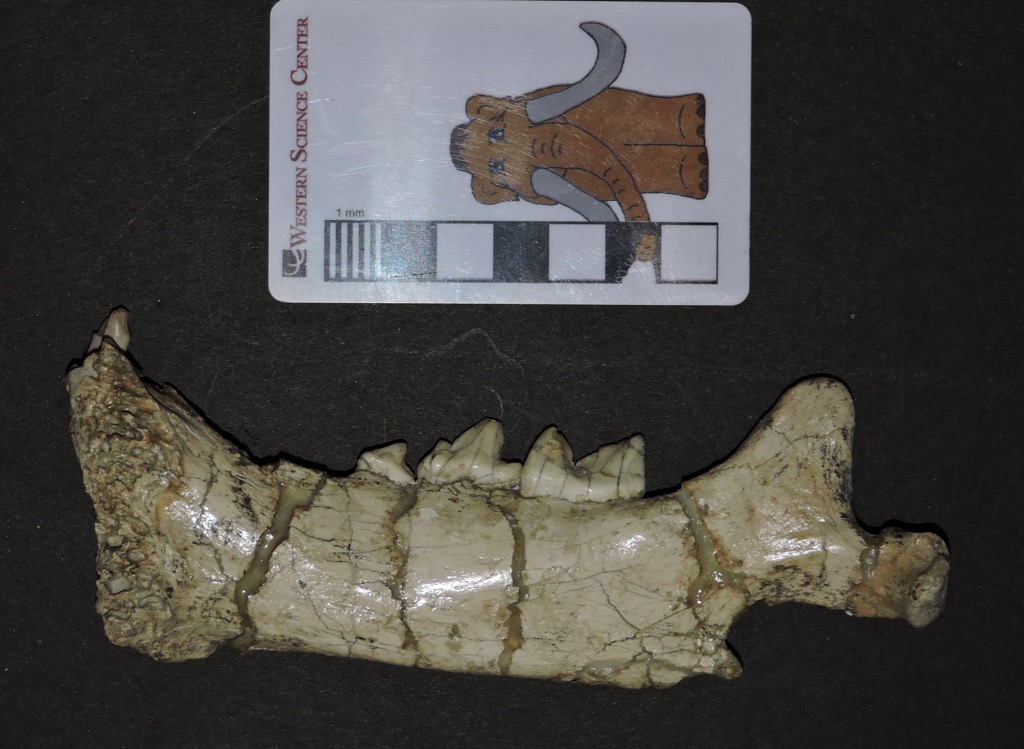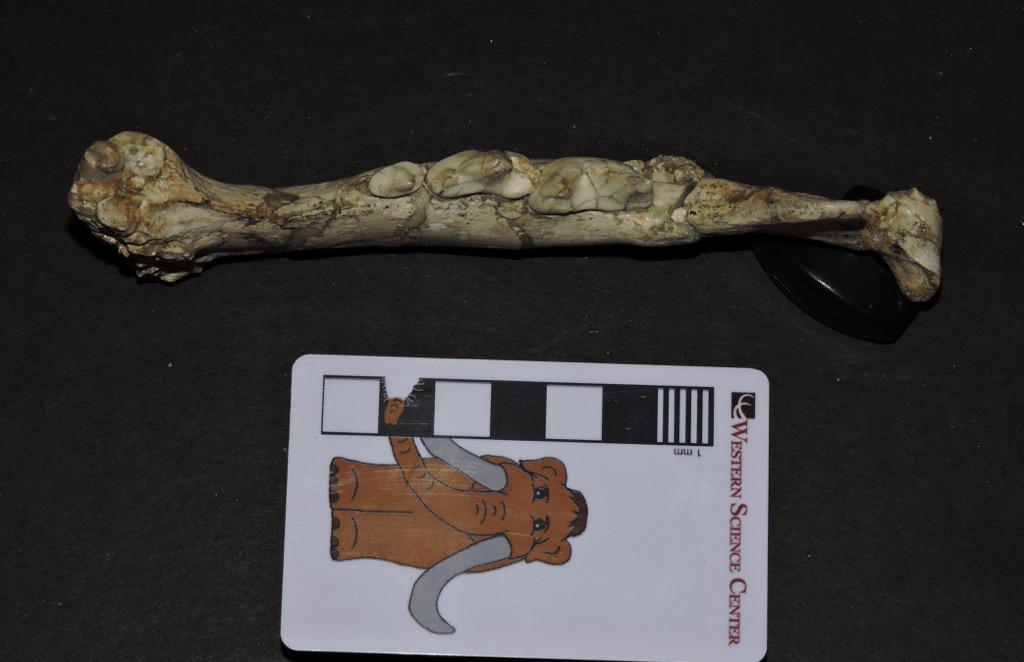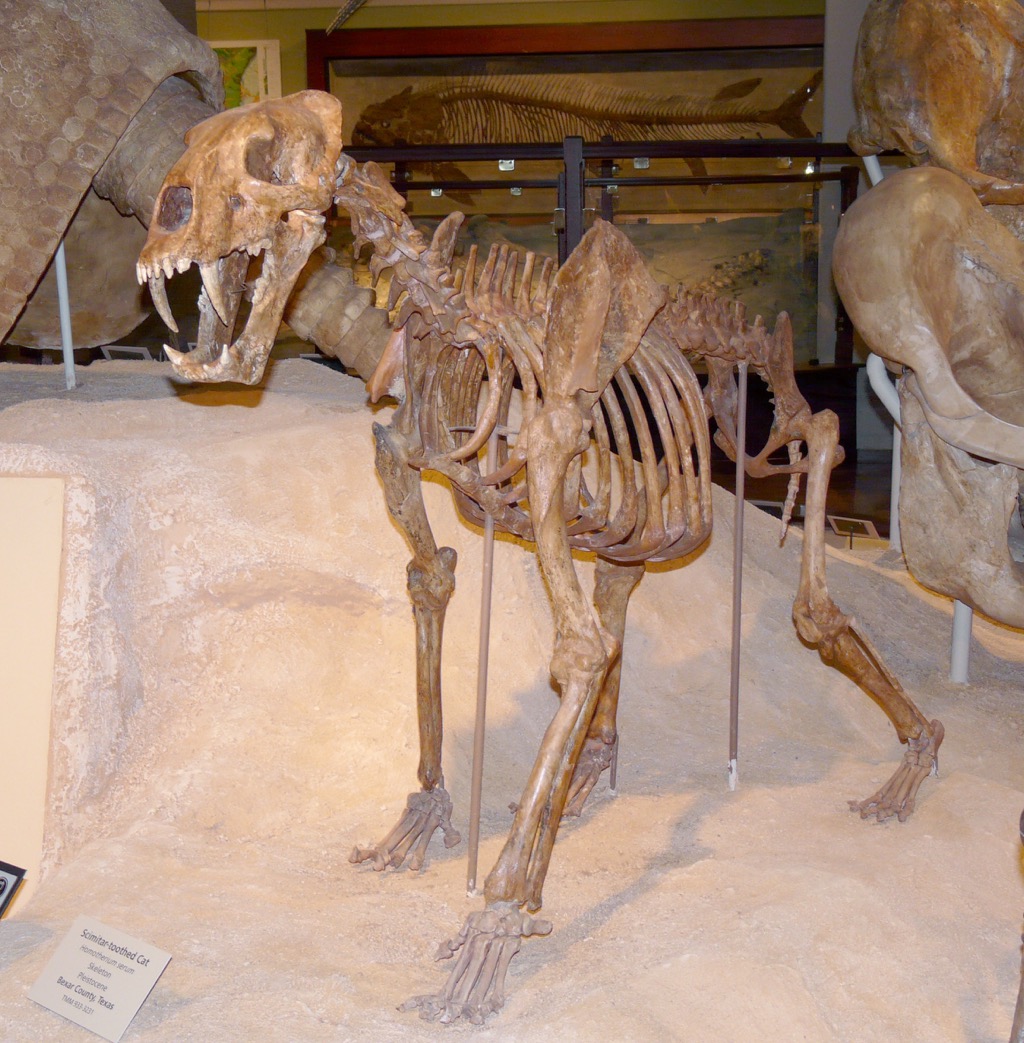 A basic tenet of ecology is that as you move higher up a food chain, the biomass (and usually number of individual animals) will get smaller. Each trophic level in a food chain gets its energy from the level below, and since there is never a perfect 100% energy transfer there is always less energy available at higher levels. This has a profound impact on the fossil record; in general, "top-of-the-food-chain" carnivores are exceptionally rare as fossils, because they were also rare as living animals. (If you spend time outdoors, think about how many squirrels, rabbits, and deer you've ever seen, compared to the number of coyotes and bobcats.) While there are occasional exceptions such as the predator trap at Rancho La Brea that bias the fossil record in favor of carnivores, at most localities large carnivores are rare.The fossils Southern California Edison El Casco Substation site are dominated by rodents, horses, and other herbivores, but a handful of large carnivores were also discovered. One of the most fascinating is the "other" Ice Age sabertooth cat, Homotherium.A number of bones from one individual of Homotherium were collected at El Casco, including the right dentary (lower jaw) shown here. At the top is the lateral view, and below is the medial view:
A basic tenet of ecology is that as you move higher up a food chain, the biomass (and usually number of individual animals) will get smaller. Each trophic level in a food chain gets its energy from the level below, and since there is never a perfect 100% energy transfer there is always less energy available at higher levels. This has a profound impact on the fossil record; in general, "top-of-the-food-chain" carnivores are exceptionally rare as fossils, because they were also rare as living animals. (If you spend time outdoors, think about how many squirrels, rabbits, and deer you've ever seen, compared to the number of coyotes and bobcats.) While there are occasional exceptions such as the predator trap at Rancho La Brea that bias the fossil record in favor of carnivores, at most localities large carnivores are rare.The fossils Southern California Edison El Casco Substation site are dominated by rodents, horses, and other herbivores, but a handful of large carnivores were also discovered. One of the most fascinating is the "other" Ice Age sabertooth cat, Homotherium.A number of bones from one individual of Homotherium were collected at El Casco, including the right dentary (lower jaw) shown here. At the top is the lateral view, and below is the medial view: The dentary is largely complete, although there is some damage at each end, and several teeth are broken. There is a flange on the bottom edge at the front of the jaw; this is a common feature in sabertooth cats (and some other saber-toothed animals) to help protect the long upper canine teeth.Below is a dorsal view, showing the occlusal side of the teeth:
The dentary is largely complete, although there is some damage at each end, and several teeth are broken. There is a flange on the bottom edge at the front of the jaw; this is a common feature in sabertooth cats (and some other saber-toothed animals) to help protect the long upper canine teeth.Below is a dorsal view, showing the occlusal side of the teeth: A labeled version of the same image:
A labeled version of the same image: Cats, including Homotherium, have a highly specialized dentition. Each half of the lower jaw includes 3 incisors and an enlarged canine. Most of the premolars and molars have been lost in advanced cats, with only the 3rd and 4th premolars and the 1st molar remaining. These are modified into sharp blades that, when occluding with the upper teeth, act like a pair of scissors for slicing meat. Cats lack a grinding molar in the back of the mouth like the kind seen in dogs, and as a result are much less likely to gnaw on or attempt to crack open the bones of their prey.One of the unusual features of Homotherium is its enlarged incisors. It's not obvious in this specimen because the canine tooth is broken, but the lower incisors were almost as large as the canine, and protrude more from the front of the mouth than in most other cats. There's a beautiful illustration of Homotherium by Mauricio Anton that shows details of the unusual dentition.Homotherium was a large, tiger-sized cat with rather short back legs compared to the front legs, as can be seen in the reconstructed skeleton at the Texas Memorial Museum show below. Several different species of Homotherium are known from both the New World and the Old World, and they probably filled a variety of different ecological niches. There is at least one site in Texas that suggests that a Homotherium population there may have had a preference for juvenile mammoths as prey items, but mammoths are exceptionally rare in the sediments that produced the El Casco Homotherium.
Cats, including Homotherium, have a highly specialized dentition. Each half of the lower jaw includes 3 incisors and an enlarged canine. Most of the premolars and molars have been lost in advanced cats, with only the 3rd and 4th premolars and the 1st molar remaining. These are modified into sharp blades that, when occluding with the upper teeth, act like a pair of scissors for slicing meat. Cats lack a grinding molar in the back of the mouth like the kind seen in dogs, and as a result are much less likely to gnaw on or attempt to crack open the bones of their prey.One of the unusual features of Homotherium is its enlarged incisors. It's not obvious in this specimen because the canine tooth is broken, but the lower incisors were almost as large as the canine, and protrude more from the front of the mouth than in most other cats. There's a beautiful illustration of Homotherium by Mauricio Anton that shows details of the unusual dentition.Homotherium was a large, tiger-sized cat with rather short back legs compared to the front legs, as can be seen in the reconstructed skeleton at the Texas Memorial Museum show below. Several different species of Homotherium are known from both the New World and the Old World, and they probably filled a variety of different ecological niches. There is at least one site in Texas that suggests that a Homotherium population there may have had a preference for juvenile mammoths as prey items, but mammoths are exceptionally rare in the sediments that produced the El Casco Homotherium.
